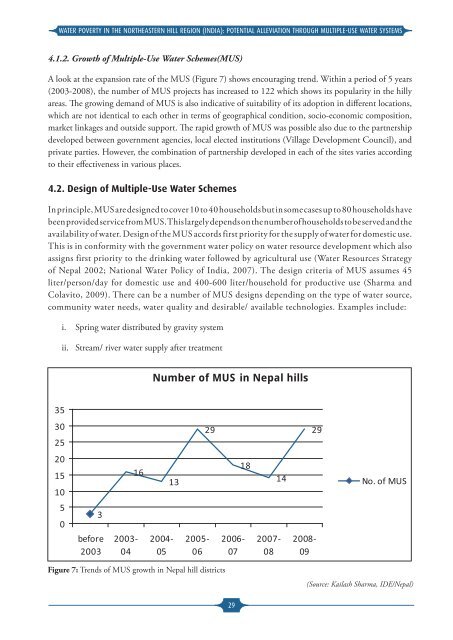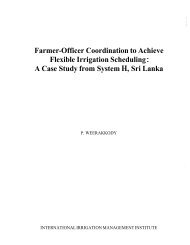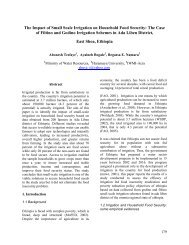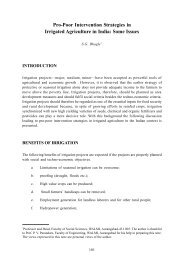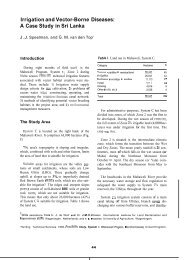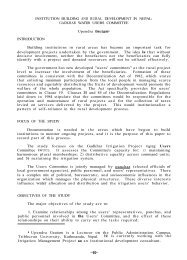WATER POVERTY IN THE NORTHEASTERN HILL REGION (INDIA)
WATER POVERTY IN THE NORTHEASTERN HILL REGION (INDIA)
WATER POVERTY IN THE NORTHEASTERN HILL REGION (INDIA)
Create successful ePaper yourself
Turn your PDF publications into a flip-book with our unique Google optimized e-Paper software.
<strong>WATER</strong> <strong>POVERTY</strong> <strong>IN</strong> <strong>THE</strong> NOR<strong>THE</strong>ASTERN <strong>HILL</strong> <strong>REGION</strong> (<strong>IN</strong>DIA): POTENTIAL ALLEVIATION THROUGH MULTIPLE-USE <strong>WATER</strong> SYSTEMS4.1.2. Growth of Multiple-Use Water Schemes(MUS)A look at the expansion rate of the MUS (Figure 7) shows encouraging trend. Within a period of 5 years(2003-2008), the number of MUS projects has increased to 122 which shows its popularity in the hillyareas. The growing demand of MUS is also indicative of suitability of its adoption in different locations,which are not identical to each other in terms of geographical condition, socio-economic composition,market linkages and outside support. The rapid growth of MUS was possible also due to the partnershipdeveloped between government agencies, local elected institutions (Village Development Council), andprivate parties. However, the combination of partnership developed in each of the sites varies accordingto their effectiveness in various places.4.2. Design of Multiple-Use Water SchemesIn principle, MUS are designed to cover 10 to 40 households but in some cases up to 80 households havebeen provided service from MUS. This largely depends on the number of households to be served and theavailability of water. Design of the MUS accords first priority for the supply of water for domestic use.This is in conformity with the government water policy on water resource development which alsoassigns first priority to the drinking water followed by agricultural use (Water Resources Strategyof Nepal 2002; National Water Policy of India, 2007). The design criteria of MUS assumes 45liter/person/day for domestic use and 400-600 liter/household for productive use (Sharma andColavito, 2009). There can be a number of MUS designs depending on the type of water source,community water needs, water quality and desirable/ available technologies. Examples include:i.ii.Spring water distributed by gravity systemStream/ river water supply after treatmentNumber of MUS in Nepal hills353025292920151016131814No. of MUS503before20032003-042004-052005-062006-072007-082008-09Figure 7: Trends of MUS growth in Nepal hill districts(Source: Kailash Sharma, IDE/Nepal)29


